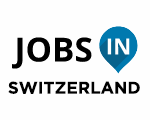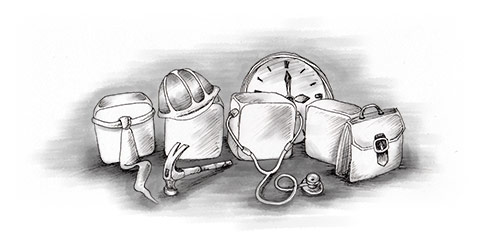Contributions to old-age insurance and entitlement benefits can consist of some or all of the following pillars:
- the basic state old-age and survivors’ insurance scheme (AVS, 1st pillar)
- an occupational benefit plan (PP, 2nd pillar)
- an individual old-age insurance (3rd pillar).
(1) The first pillar: The basic state insurance scheme
The basic state old-age and survivors’ insurance scheme ( AHV – Alters- und Hinterlassenenversicherung) is obligatory for all employees, self-employed and unemployed over 20 years old.
Contributions to the basic scheme are split equally between employer and employees, and are directly deducted from your salary. At the time of writing, total contributions to the basic schemes amounted to 10.1% of gross salary for employees.
Men who have reached the age of 65 and women who have reached the age of 63 (64 as from 2005) are entitled to draw an AVS pension if they have contributed towards the scheme for at least one full year.
In 2004, pensions were CHF 1,055-2,110/month. The total pensions for a married couple could not exceed CHF 3,165.
The pension is calculated on the basis of the relative average income and the number of years the person has contributed. Income is made up of total earned income plus bonuses for child-rearing and care-taking. If you have not paid into the scheme for the full period a proportion of the full pension may be drawn.
The income which spouses have earned during their married life is split and 50% is credited to each spouse. The contribution made by spouses not employed outside the home is converted into income.
A full pension is paid if the person in question has contributed for the full period, i.e. has paid into the scheme for the same number of years as others born in the same year.
Early retirement
According to the circumstances, a pension may be received before reaching the official retirement age. The pension paid is reduced by between 3.4 and 6.8% for each year that the pension is drawn early. A pension can also be drawn 1 to 5 years after the retirement age before drawing a pension, which increases the amount by between 5.2 and 31.5%/year.
In certain circumstances, an individual may also be entitled to supplementary benefits. These are paid based on needs and depend on personal and economic circumstances.
Foreigners working in Switzerland
Switzerland has bilateral pension agreements with more than 20 countries, including all Western European countries. If you come from one of these countries, you will get your Swiss pension paid out irrespective of where you live. In this case, your pension entitlements cannot be transferred to another pension system after leaving Switzerland and aren’t refundable.
If you come from a country that doesn’t have any bilateral agreement, your contributions to the basic schemes will be refunded when you leave Switzerland.
If you only work in Switzerland for a few months, you might be exempted from contributions to the basic scheme, especially if your home country has a bilateral agreement with Switzerland.
A word of caution: As most Western European countries, Switzerland faces an increasing gap between total contributions and payouts in the statutory pension insurance. Benefits may well be reduced in the future, so don’t count on the basic pension scheme as the only source of income on retirement.
(2) The second pillar: Company pension funds
Company pension funds are the base of the occupational benefit plan ( Berufliche Vorsorge/BV(G) -Prévoyance Professionelle/PP), which is the second pillar of the pension system.
All employees with an annual income of between CHF 25,320 and CHF 75,960 are obliged to pay contributions to the scheme. The insurance scheme can be run by a company pension, state or private fund. Total contributions increase with age and amount to 7-18% of gross salary (2004). In addition, you may have to pay a few percent for additional premiums.
Men can withdraw a PP pension at the age of 65, women at the age of 63. Pensions are calculated as a percentage of your accumulated credit, which is made up of contributions and interest. You are entitled to a full pension if regularly payments into the fund have been made from the age of 25 until retirement. It is possible to draw a pension before reaching retirement age if the regulations of the pension fund allow this.
A lump-payment of your contributions and interest can only happen in the following cases:
- If you leave Switzerland
- If you become self-employed
- When the total sum accrued is less than one year of payments
(3) The third pillar: Private pension insurance
The so-called individual occupational pension scheme (3rd pillar) subsidizes private pension savings by tax breaks. Contributions are deducted from taxable income and only taxed at the time of payment. Interest on contributions is not taxed.
The amount of pension paid depends on the chosen type of policy. There is a maximum amount of contributions that are deductible from income. This depends on salary and contributions to other insurance schemes. This form of pension insurance subsidy is only available to employees.


